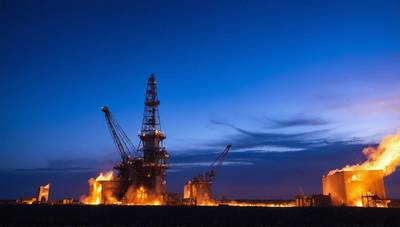EU rules could overheat a gas market already on fire: Bousso
European policymakers who are worried about rising energy prices have already shot themselves in two feet. Two rules designed to manage the gas market of the region run the risk instead of overheating the market during the summer months, when stocks should be refilled.
In response to the disruption of gas supplies caused by the Russian invasion of Ukraine, European Union set binding targets for the storage of gas in November. The rules include intermediate goals for February, April, July, and September.
The need to ensure supplies before winter is obvious, but the target actually puts buyers at a disadvantage as it informs sellers of their needs.
Already, the European gas market has reached its limits.
On February 10, the European gas storage capacity was 49%, below the 67% of last year and the 51% of the previous 10 years for the same time period. Due to the colder weather and lower wind speeds, the seasonal draw was higher than the two previous winters.
Since Europe drastically reduced its Russian gas imports in 2022 as a response to the Ukraine War, it has become more complicated and costly to refill storage during summer months.
Europe has been forced to import more LNG, mainly from the United States, in addition to pipeline gas imported from Norway and North Africa.
The benchmark Dutch TTF prices have reached a high of 58 euro per megawatt-hour (MWh) in the last two years, which is around three times higher than their level before the invasion. However, this price is still well below 2022's record of 311 euros per MWh.
It is unlikely that Europe would select this pricing environment when trying to source excess volume.
Unintentional Consequences
In recent months, the combination of tightening LNG markets globally and known European filling targets has created an alarming anomaly in gas prices.
Benchmark TTF Natural Gas Prices for Summer 2025 months soared in November above Winter 2026 prices. The traders have no incentive to stock up gas before winter 2026, as they will lose out on money.
Gas can be stored today at lower prices and sold later at higher prices. This is known as a contango market structure.
The summer-winter spread widened after THE, Germany’s gas market trading center, announced on January 21, that it was in discussions with the Economy Ministry on a proposed for the government subsidise the refilling of gas storage sites, if the market remains in backwardation. This means summer 2025 prices remain above winter 2026.
The German regulator's intention was clear. It hoped that buyers would respond positively to government assurances and rebuild these crucial gas inventories during the summer.
The German proposal has not eased concerns but instead seems to have made them worse. In recent weeks, the price premium for summer has increased. The speculators are likely to have realized that buying contracts would allow them to make quick profits.
Self-Inflicted Wound
The rapid decline in European gas storage has caused a major problem for European governments as well as the energy consumers of this region.
Europe has already begun to import large quantities of LNG, at high prices. Kpler data shows that imports into the EU and Britain were at their highest level since December 2023, totaling 9.8 million tons. The United States accounted for 57% of this volume.
Gas supplies are likely to be more competitive in the future, since new U.S. export facilities for LNG haven't increased their capacity as quickly as anticipated and demand is continuing to increase in Asia, Egypt, and elsewhere.
The cost of achieving European storage goals may increase.
How much will it cost? Calculations show that if gas storage levels drop to 35% or less by winter, achieving the 90% target would cost 36 billion euros, based on current TTF prices.
Some reports indicate that the EU is considering extending the deadline for filling the target to December 2025. This would likely reduce the pressure on summer prices.
It is difficult to know exactly when and by how much targets may change. This creates uncertainty, which is the last thing that the energy market wants.
(source: Reuters)


